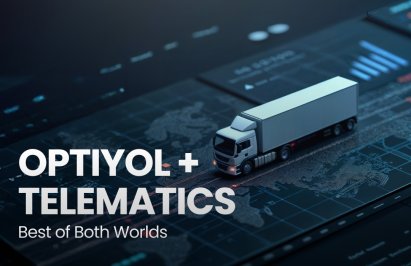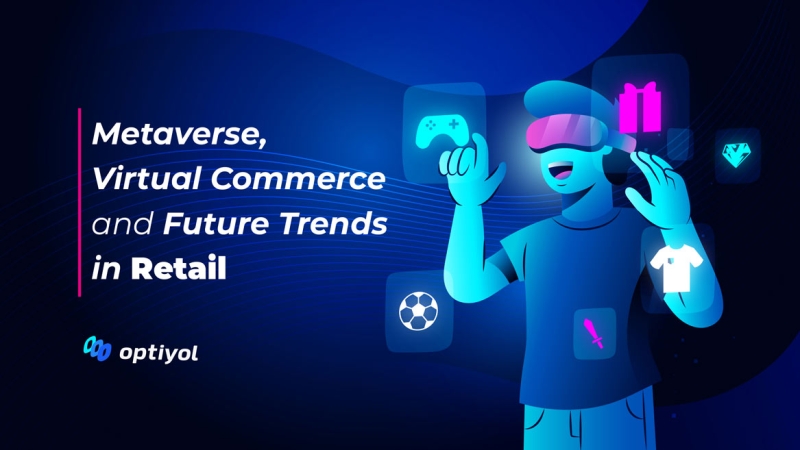
February 16, 2022


The spotlight on virtual shopping is now brighter than ever. New worlds and experiences are being built using metaverse, augmented reality (AR), and virtual reality (VR). We will be able to move our daily activities like hanging out with friends, shopping, playing games and having work meetings, into the metaverse.
Lines between virtual and physical shopping worlds will be blurred. It will be a commercial experience unlike anything we have ever seen. But what will all this mean for real world store operations and supply chain management?
The pandemic has already set the tone for higher standards in omnichannel shopping experiences. We have gotten used to clicking on products and having them delivered to our doorstep. This is a very sterile process. AR will bring back some of the lost experience points in retail by increasing possibilities of interactive shopping.
Tech companies have been working on VR experiences, such as VR games with scenes that look like sci fi movies. Limitations of the law of logical space don't apply in this world. Visual stimulation takes center stage, supporting endless possibilities. This new universe has everything in 3D and with volume.
Higher quality visualization will persuade customers more easily. Millions with VR headsets are expected to start browsing for goods in the near future. They will be trying on glasses, testing household goods, trying on clothes and taking virtual test drives.
AR technology will be used to see how a piece of furniture fits or which shoes look best. This 3D trial function of virtual shopping eliminates the essential problem of returns for online retail brands.
This function will ensure consumers of the product results and help the reality of the shopping outcome meet their expectations. As part of the customer experience, holograms will show how to put together the pieces of newly purchased furniture.
Metaverse will provide features to blend in-store and online shopping experiences. Combining tangible in-store experience with digital elements, brands will meet consumer needs more easily.
Gen Z was the dominant group for video games, social networks, and types of social media, but Gen Alpha will lead the way to the metaverse.
Trying on different pieces of clothing in one location to see how they look thanks to VR and AR glasses and having them delivered at your door will be very convenient. With a virtual avatar, users will take part in this ecosystem’s economy and receive awards for their participation. This will be an agent to increase interaction in the metaverse on its own. How retail stores will adapt to the virtual world is yet to be followed.
Even though marketers and brands are treating metaverse as a finalized, fully developed concept, it isn’t yet fully realized. Technology companies like Facebook, Roblox and Fortnite have different visions for how the metaverse project will fall into place. Whether it’s NFTs (digital media that has a virtual ownership certificate), buying some land in your neighborhood or using your Oculus Quest, there are a lot of details yet to be discussed.
Marketers and merchandisers are beginning to rethink what a store will be like in the future.
One by one, brands will take the leap and enter the virtual shopping world. Successful retailers are turning it to their advantage and starting to announce their presence in virtual spaces on social media. Brands like Adidas, McDonald’s and Coca-Cola already joined in 2021. Luxury brands Gucci, Burberry, Louis Vuitton and many more are taking their seats as well.
When the roads of a new world are being paved, retailers should keep an eye out for opportunities. Here is how:
If retailers keep these in mind and find the courage to take part among the pioneers, it will pay off.
Metaverse and V Commerce will affect everything related to commerce, including social media marketing, operations management, and logistics services.
This means richly varied advertisement, higher consumer expectations, more global commerce and technological innovations applied to operations management.
Expanded shopping experiences will lead to higher volumes in retail orders. Consumers will also demand high-speed delivery to match their interactive shopping experience. Increased year-round shopping orders and growing attention to eco-sensitive behavior will turn heads towards delivery optimization
In order to keep up with the new world of next-generation technologies, we need innovative tech solutions to meet evolving needs. This is exactly why Optiyol is dedicated to developing route optimization with the next-gen approach.
Optiyol’s accurate, on-time and smart delivery solutions for last-mile operations will provide a competitive advantage to increase customer satisfaction. With evolving shopping experiences, Optiyol’s smart route optimization technology will keep you competitive. Check out Optiyol’s solutions and be a company that adapts first to these exciting future trends, instead of being left behind.